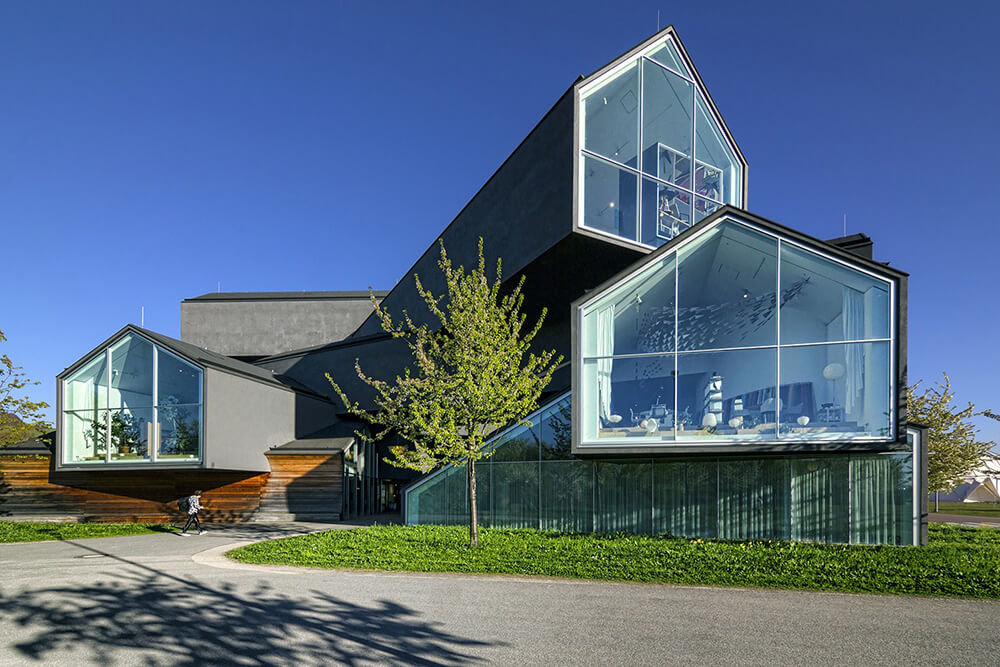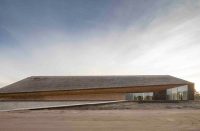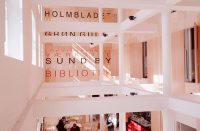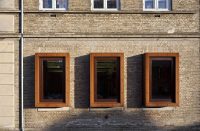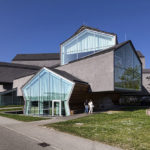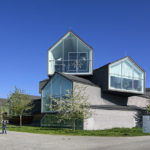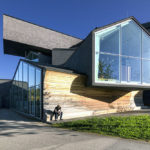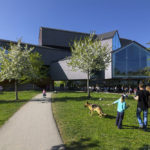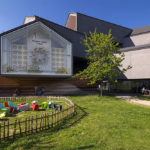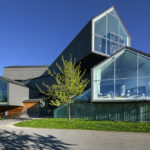Architect(s): Herzog & de Meuron
Address: Ray-Eames-Straße 1, WEIL AM RHEIN, Germany
Latitude/Longitude: 47.602950,7.617875
An architecture museum that features the work of the most renowned architects is what Vitra Campus has become over the years. Some of these architects are Frank Ghery, Zaha Hadid, Alvaro Siza, Tadao Ando, Jean Pruvé, Nicholas Grimshaw, Buckminster Fuller and SANAA. VitraHaus building, a series of stacked pitched-roof boxed, designed by Herzog & de Meuron for Vitra’s Home Collection is one of the additions to the complex.
Home Collection was launched by Vitra in January 2004 and includes design classics as well as re-editions and products by contemporary designers. Vitra created the Home Collection having a new target group in mind. That was individual customers with an interest in design as it is a company whose previous activity was primarily focused on office furnishings and business clients.
VitraHaus
Basel-based architects Herzog & de Meuron were commissioned in 2006 to design the VitraHaus by the company, since no interior space was available for the presentation of the Home Collection on the Vitra Campus in Weil am Rhein. The building not only enhances the already outstanding ensemble of Vitra architecture, but assumes the important role of marking the Vitra Campus, thanks to its exposed location and striking appearance. Two other buildings in this area, the Vitra Design Museum by Frank Gehry (1989) and the Conference Pavilion by Tadao Ando (1993) are joined with the VitraHaus joins which stands on the northern side of the grounds in front of the fenced perimeter of the production premises. The new structure is positioned a good distance away from the Vitra Design Museum and adjacent gatehouse with the ample size of the plot. It makes room for an extension of the orchard meadow in front of the buildings, a typical feature of the local landscape.
Connection of two themes
Two themes that appear repeatedly in the oeuvre of Herzog & de Meuron are connected by the concept of the VitraHaus. These are the theme of the archetypal house and the theme of stacked volumes. Returning to the idea of the ur-house was especially appropriate in Weail am Rhen, since the primary purpose of the five-storey building is to present furnishings and objects for the home. The showrooms are reminiscent of familiar residential settings from the proportions and dimensions of the interior spaces, called ‘domestic scale’ by the architects. Abstract elements are the conception of the individual ‘houses’, which have the general characteristics of a display space. Only the gable ends are glazed, and an extrusion press seems to shape the structural volumes, with just a few exceptions. A three-dimensional assemblage – a pile of houses that, at first glance, has an almost chaotic appearance – is created by the twelve houses, whose floor slabs intersect the underlying gables, stacked into a total of five stories and breathtakingly cantilevered up to 49 feet in some places.
Exterior and landscape
The structure is unified by the charcoal of the exterior stucco skin, ‘earths’ it and connects it to the surrounding landscape. An entryway to the Campus is one of the building’s functions, like a small, vertically layered city. An open central area is defined by a wooden plank floor, around which five buildings are grouped. These buildings are a conference area, an exhibition space for the chair collection of the Vitra Design Museum and a conglomerate comprising the Vitra Design Museum Shop. There are also the lobby with a reception area and cloakroom, and a café with an outdoor terrace for summer use. Visitors are taken to the fourth storey with a lift, where the circular tour begins. A spectacular view of the Tüllinger Hill is offered by the glazed northern end of the room, upon exiting the lift. A panorama of Basel with the industrial facilities of the pharmaceutical sector is opened at the opposite end, where the glass front is recessed to create an exterior terrace. The views of the surrounding landscape determine the directional orientation of the houses that is hardly arbitrary, as one discovers on the path through the VitraHaus.
Interior
The complexity of the interior space arises not only from the angular intersection of the individual houses but also from the integration of a second geometrical concept. Expansive, winding organic volumes that have the ability of figuratively eat their way through the various levels of the building like a worm, sometimes revealing fascinating visual relationships between the various houses, at other times blocking the view are the integration of all staircases. The interior walls are finished in white in order to give priority to the furniture displays.
Structure
VitraHaus rises above the other buildings on the Vitra Campus, with its dimensions of 187 feet in length, 177 feet in width and 69.8 feet in height. The deliberate intention was to create a vertically oriented structure with a small footprint, which grants an overview in multiple senses and not an horizontal building, the common type for production facilities. This overview would be of the surrounding landscape and the factory premises, but also an overview of the Home Collection. Two types of forms are interpenetrate in the same way as interior and exterior space. These are the orthogonal-polygonal, as perceived from the exterior, and the organic, which produces a series of spatial surprises in the interior – a ’secret world’ as Herzog & de Meuron say, with a suggestive, almost labyrinthine character. Visitors traverse the Vitra Home cosmos and ultimately return to their starting point on their path through the five stories.

